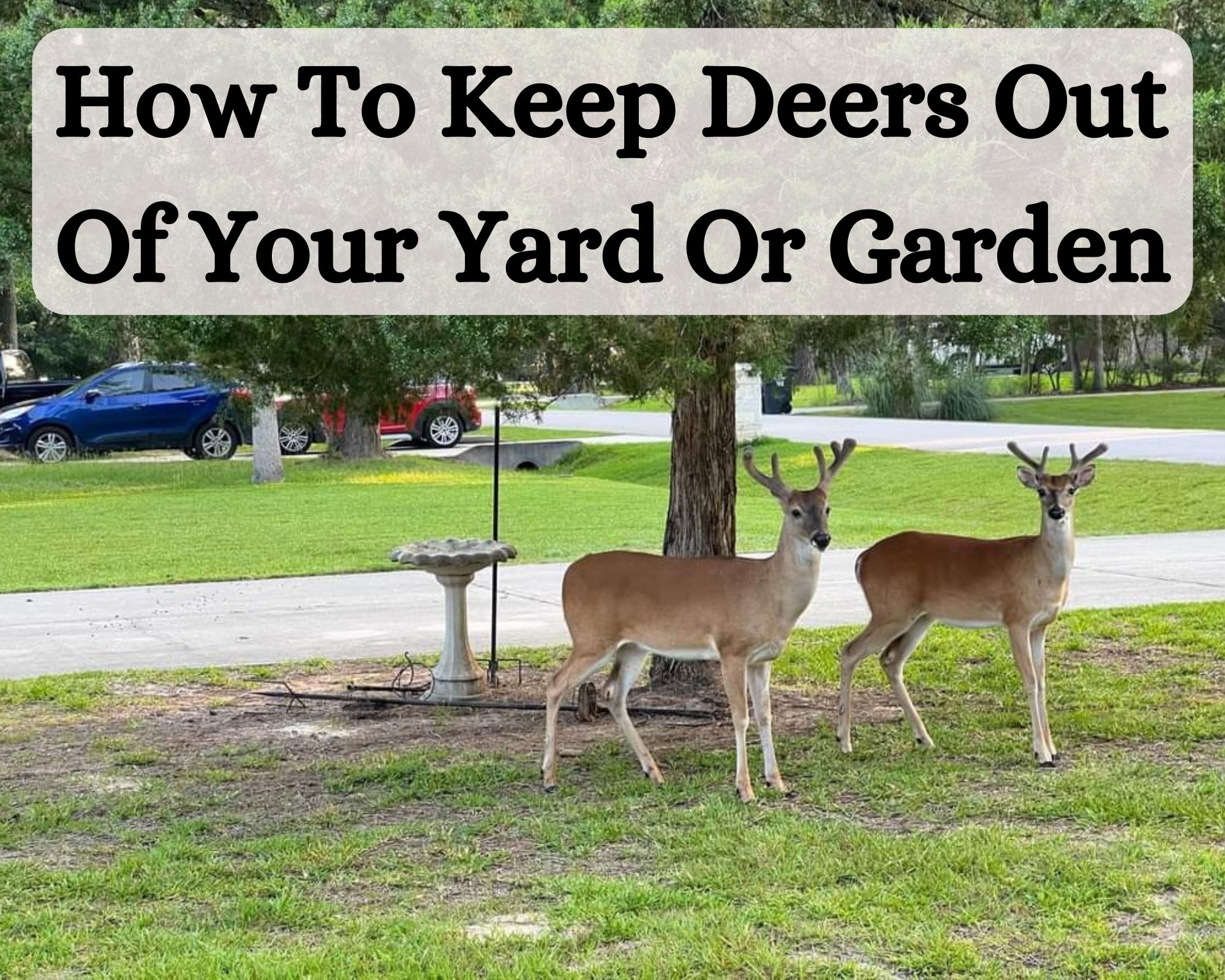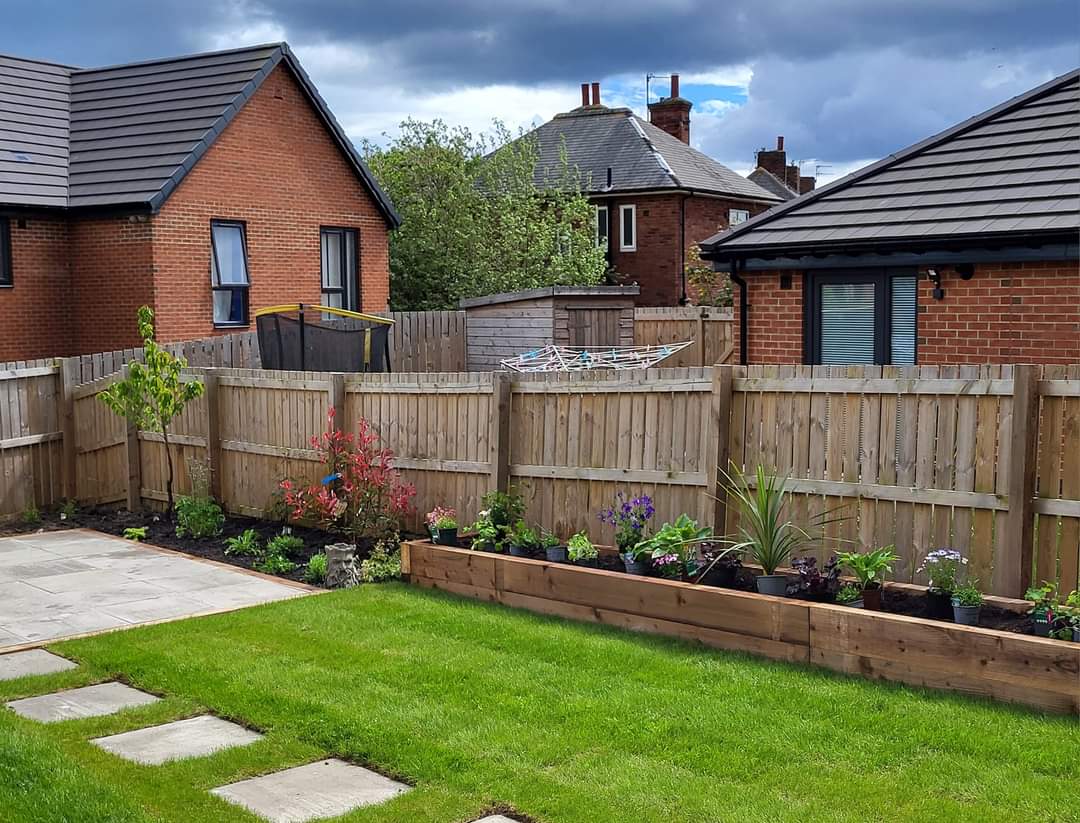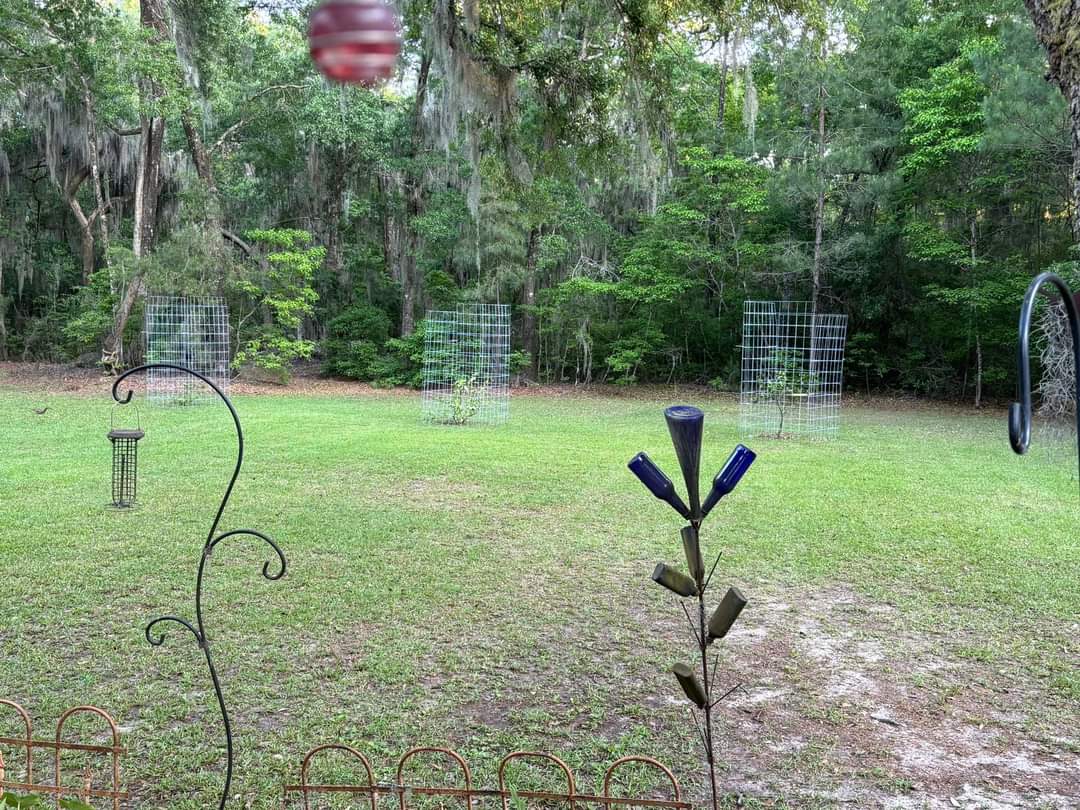As delightful as deer are to observe from afar, you really don’t want them anywhere near your yard or garden. These graceful creatures possess an insatiable appetite for tender plants, flowers, and vegetables, leaving a trail of devastation in their wake.
Imagine all the work you’ve put into establishing a thriving garden with your favorite flowers, vegetables, fruits, and even ornamental shrubs, only to wake up one morning and everything you worked for is gone.
The battle against these four-legged foragers lies in understanding deer behavior and deploying effective countermeasures that discourage their presence without causing harm.
How To Keep Deer Out Of Your Yard Or Garden
1. Choose The Plants Wisely
The types of plants you introduce to your garden or yard play a crucial role in deer control. While deer are opportunistic feeders with a diverse diet, they prefer certain plants over others.
Below is how to employ this powerful tool to keep deer away.
a) Keep Deer-preferred Plants To A Minimum
Deer are drawn to smooth, tender, succulent, flavorful vegetation and those with a high moisture and protein content. Avoid growing plants deer love to eat in large amounts, especially in spring when these animals are looking to gain as much weight in preparation for winter, and the does are nursing.
Plants that deer enjoy eating include:
- Hostas, roses, daylilies, pansies, impatiens, and English ivy
- Hickory nuts and pecans
- Carrots, broccoli, lettuce, peas, pumpkins, sweet corn, green beans, and tomatoes
- Blackberries, blueberries, peaches, and apples
b) Concentrate Deer-favorite Plants Near The House
Are you set on having certain plants in your garden or yard despite the threat of deer? If that’s the case, I advise keeping plants deer love eating near the house where you can keep a closer eye on them and ensure they don’t become deer meal.
Also, deer generally steer clear of humans, so keeping deer-favorite near you will deter these animals.
c) Grow Less-Appealing Plants
Prioritize plant species that are less palatable to deer when choosing plants for your garden. Although no plant is entirely deer-proof, some characteristics make certain plants less attractive targets for browsing. These are:
- Prickly, Thorny, or Hairy Foliage
Deer are less likely to target plants with prickly, thorny, or hairy foliage because they are uncomfortable to eat and can cause injury. Plants with these characteristics include roses, barberry, holly, and juniper.
- Fragrant Plants
Plants with intense aromas deter deer, so choose aromatic herbs and flowers, such as lavender, sage, or Russian sage, to mask the scent of more enticing plants.
- Toxic Plants
Deer avoid eating plants with toxins or bitter compounds. Examples include Daffodils, Foxglove, Bleeding Heart, Monkshood, and Hellebore.
You can grow these plants to make your garden less appealing to deer, but be cautious with toxic plants, as they can harm other wildlife or pets if ingested.
- Tough, Fibrous Foliage
Deer resist eating many ornamental grasses such as fountain grass, little bluestem, feather reed grass, miscanthus, and blue oat grass because they have tough, fibrous foliage.
2. Strategic Plant Placement
After picking the plants you want in your garden or yard, the next step is to arrange them strategically. These animals are creatures of habit, so think like them and understand their behavior to outsmart them. Grow plants strategically to create barriers and deter deer from entering certain parts of your garden.
i) Create A Buffer Zone
Surround high-value plants, such as vegetables or prized ornamentals, with a perimeter of deer-resistant plants to create a barrier that deer are less likely to breach.
ii) Plant In Groups
Instead of scattering individual plants throughout your garden, plant them in clusters or drifts to create visual impact and maximize their deterrent effect on deer. For instance, arrange shorter plants in the front rows and taller ones in the back.
3. Fence Around Your Yard or Garden
Deer are impressive jumpers capable of easily leaping over fences, obstacles, and small barriers. However, they are less inclined to risk jumping if the other side isn’t visible. Fencing in your garden or yard is often the most reliable solution for keeping deer out.
Install an 8-foot-tall fence or more with materials deer won’t penetrate easily, like meta and woven wire mesh. Alternatively, set up an electric fence that delivers a mild shock when a deer touches it.
You can also create a natural barrier using deer-resistant plants like thick boxwood hedges.
4. Barricade Your Plant Beds With Fishing Line
Protect your plants with a fishing line if you don’t want to erect an entire fence. Unlike a tall wall, a fishing line ensures deer do not get to your flower beds while preserving the area’s visual charm.
A fishing line is also easier and cheaper to put up than a fence. String a monofilament line around your plant beds, ideally 2-3 feet above the ground.
5. Harness The Power of Scare Tactics
Convince deer to flee your home using sounds, movements, or visual stimuli. Scare tactics work against these animals because they fear unfamiliar objects, but remember that this strategy offers short-term relief.
- Motion-activated Sprinklers- a sudden burst of water from a motion-activated sprinkler will send deer back into the woods if they approach your garden.
- Blast Them With Light- Deer usually waits until nightfall to invade your garden. Stop them from damaging your garden by installing motion-sensitive floodlights.
- Noise Makers- hang aluminum foil strips, wind chimes, or bells in your garden to create unexpected noises that startle deer.
- Visual Deterrents– trick deer into thinking they are being watched or threatened by strategically placing visual deterrents like scarecrows, inflatable predators, or reflective tape around your garden.
6. Let Your Dog Outside
How often do you let your dog out in your yard or garden? They could help solve your deer problem if you let them out more. Their presence, along with their barking and movements, can intimidate deer and discourage them from approaching or browsing your plants.
So, let your dog out under supervision particularly when deer activity is high, such as dawn or dusk. Also, allow them to urinate around your garden’s perimeter and train them to respond to deer sightings or intrusions by barking or chasing them away.
7. Add Levels To Your Landscape
Deer are not great climbers, so changing your landscape by adding levels or steps helps deter these animals. Add sunken beds and terraces, create steps with bricks or concrete slabs, or stack pallets around your home.
8. Pee Outside
This tip may sound crazy but don’t write it off yet. It works, is incredibly easy, and is cheap. Urinate around your garden’s perimeter, on rocks, trees, and other areas where deer will likely enter or browse.
Reapply urine regularly, especially after watering or heavy rainfall. If you don’t want to use your urine, opt for predator urine, perhaps fox or coyote urine.
9. Use Repellents
Spray chemical or natural substances that emit unpleasant odors or tastes to deer, discouraging them from feeding on your plants.
- Contact Repellents
These repellents typically contain ingredients such as garlic, capsaicin, or rotten eggs and must be reapplied regularly, especially after rainfall. Contact repellents must directly touch the plants, creating a foul taste that deters deer from eating them.
- Area Repellents
These repellents usually have ingredients like soap or predator urine. Apply area repellents to plants, fences, or other surfaces to form a scent barrier.
10. Feed Them
You could also save your garden by giving deer an alternative food source. Add some deer feeders at a considerable distance from your garden. This may encourage them to fill their bellies with the feed and leave your plants alone.
11. Deer Proof Your Garden With Netting
Physically protect different parts of your garden, like young trees and shrubs, flower beds, and vegetable patches with netting. Use heavy-duty netting with small mesh openings.
Enclose individual plants or small garden beds with the netting, making sure the netting extends several inches above the tallest plants and is secured tightly to the ground.
12. Tidy Your Garden or Yard
Another effective way to deter deer from your garden is to keep the area tidy and free of potential hiding spots and deer attractants. Therefore, regularly weed your garden, prune overgrown shrubs, hedges, and trees, remove fallen leaves and branches, and keep your lawn well-groomed and free from tall grasses.
13. Leave Hair Clippings On Your Garden Soil
While unconventional, scattering hair clipping across your garden soil will keep deer away. The scent of the hair strands will make it seem like there’s a human nearby, thus spooking the deer. You can obtain the hair from a barbershop or salon.
14. Buy Deer Spray
Commercial deer spray can also repel deer. Get your preferred spray from a gardening store, online retailer, or local nursery, then spray your plants. Administer the spray from the onset of spring until the end of autumn and reapply it every 90 days.
Summary
Above are numerous proven strategies for deer control. However, keep in mind that if one method dissuades one deer doesn’t mean it will work on another. Therefore, combining multiple methods is the most effective approach in most cases. For instance, you can install a fence and grow your plants strategically.

Hey there, I’m Derek Schew, a writer for Lawnholic.com, where we cover everything and anything related to lawns. As someone who’s spent countless hours tending to my own lawn, I’m passionate about sharing my knowledge and helping others achieve the perfect yard. From lawn care tips to product reviews, I’m committed to providing our readers with the most accurate and up-to-date information available. So whether you’re a seasoned lawn enthusiast or just getting started, I invite you to join our community and discover the joys of a lush, green lawn.





